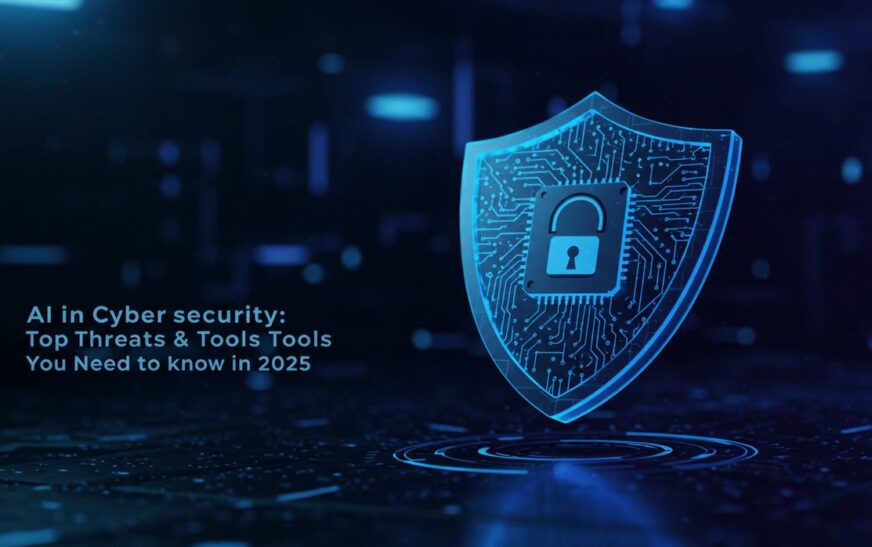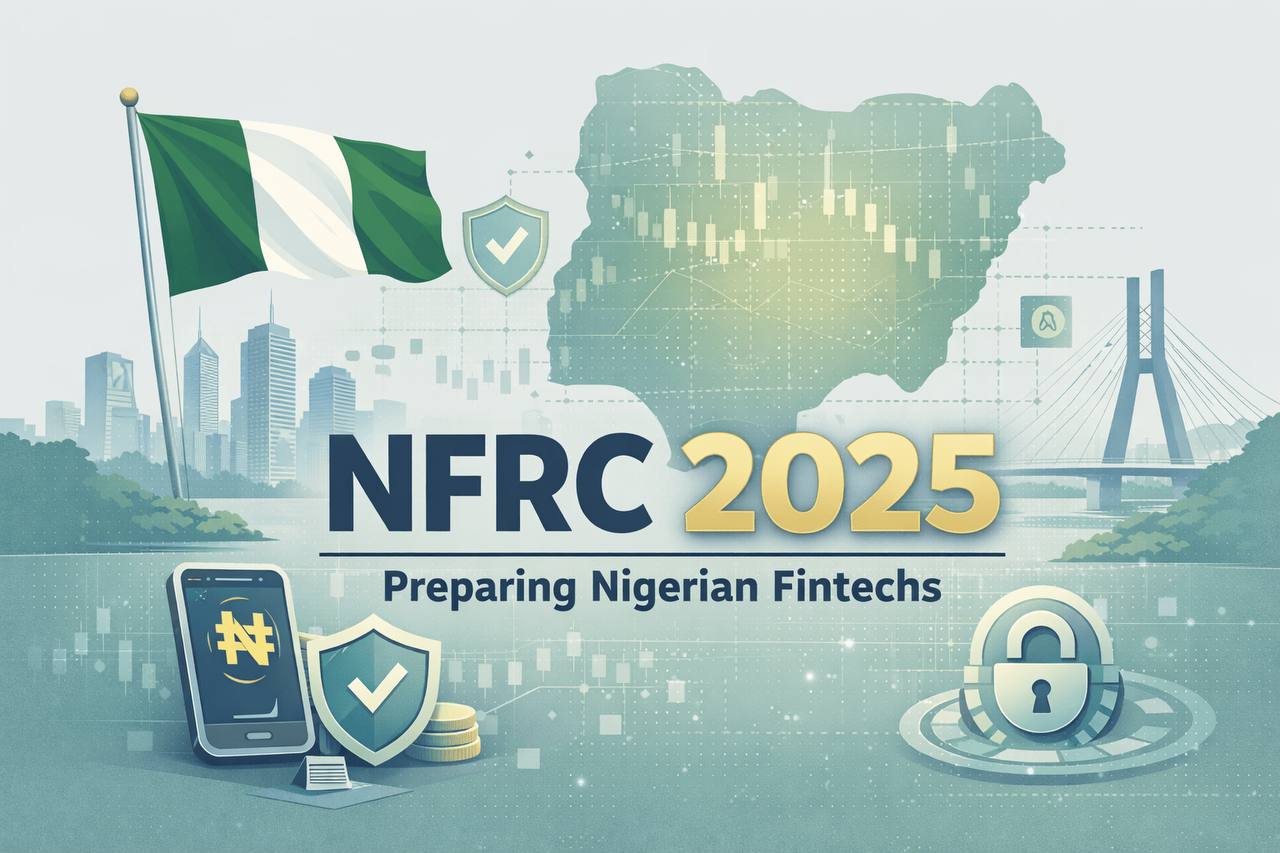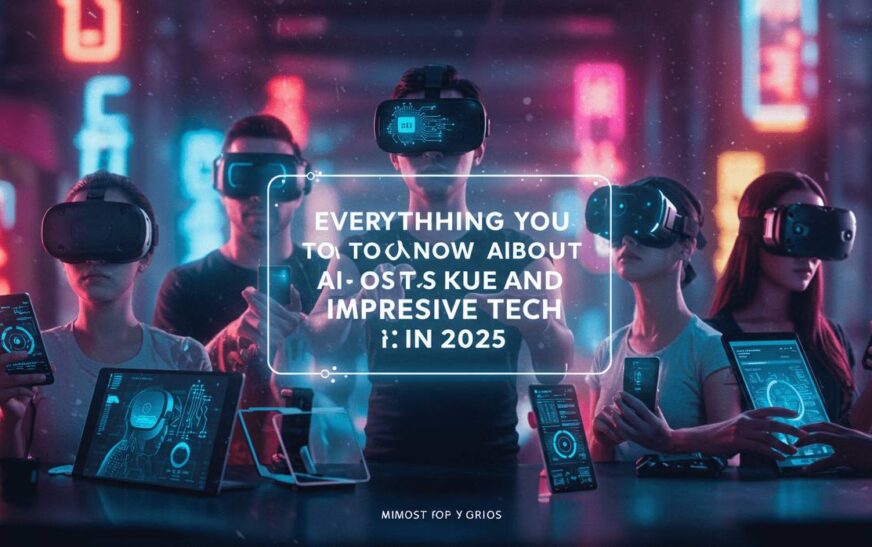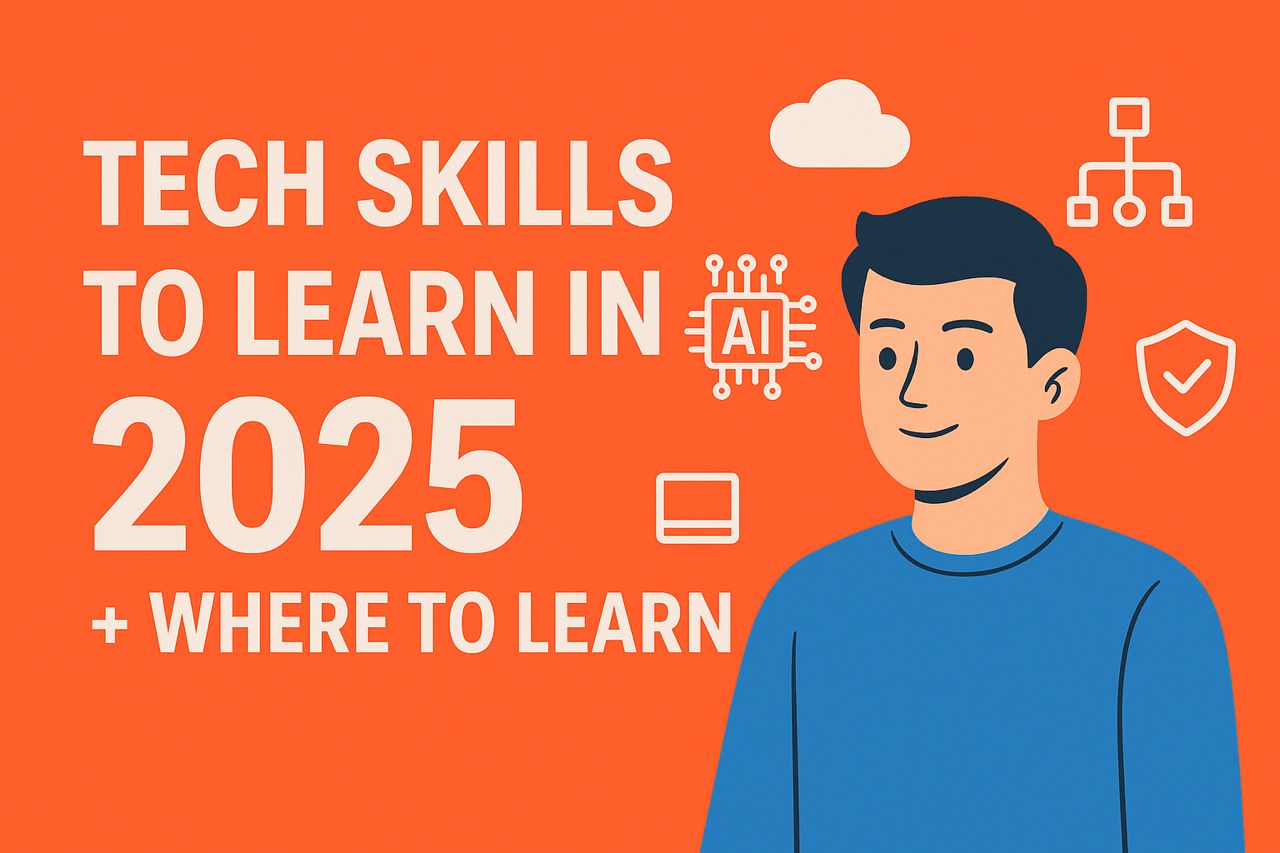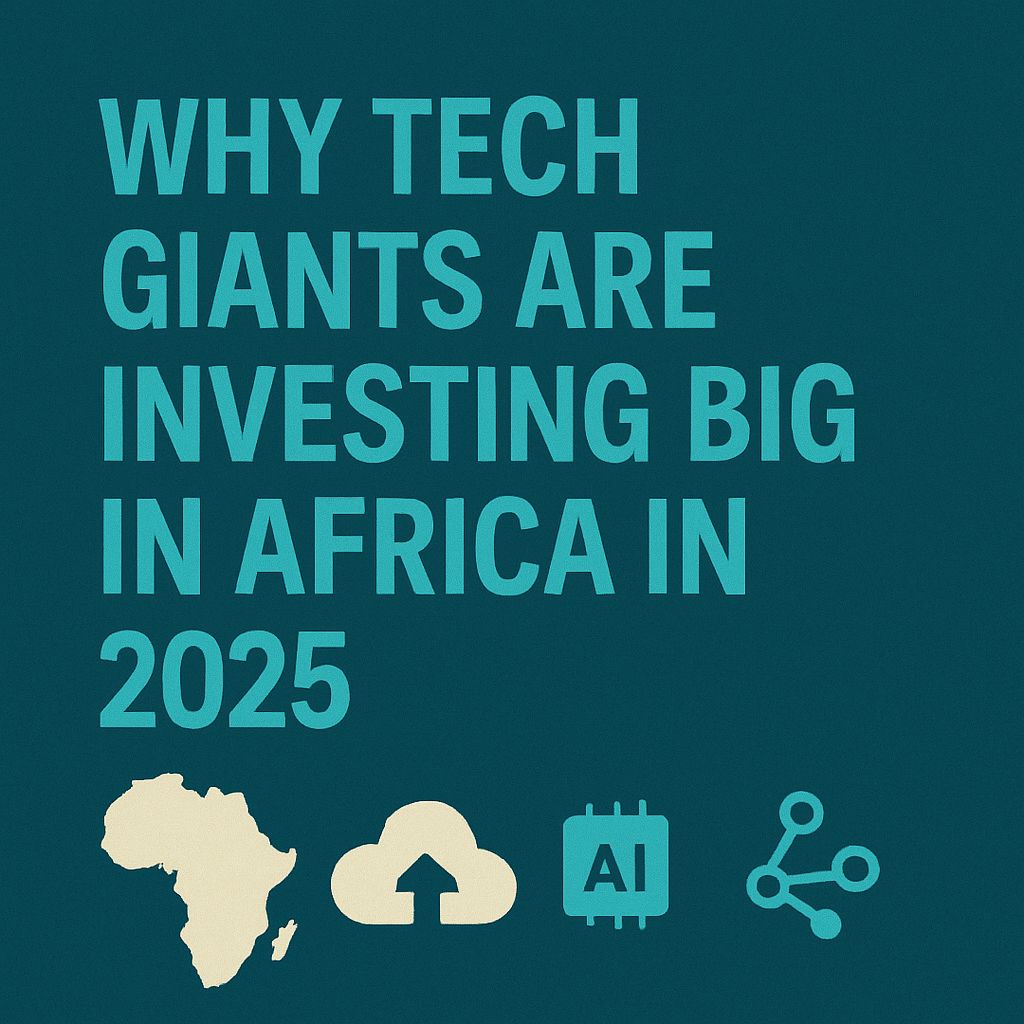In 2025, AI in cybersecurity is more than a buzzword — it’s the frontline of digital defense. As cyber threats grow more advanced, artificial intelligence is transforming how organizations detect, prevent, and respond to attacks.
From automated threat detection to intelligent malware, we’re witnessing a digital arms race. And whether you’re a tech enthusiast, founder, or everyday internet user, understanding how AI fits into cybersecurity is no longer optional — it’s essential.
Let’s break down the top threats and cutting-edge AI tools reshaping cybersecurity right now.
Top 4 AI-Powered Cybersecurity Threats in 2025
1. AI-Generated Phishing Attacks
Gone are the days of clumsy scam emails. In 2025, cybercriminals use AI to generate hyper-personalized phishing messages that mimic real language and behavior. These emails pass grammar checks, spoof domains, and adapt to your past online interactions.
Why it matters: AI makes phishing faster, more scalable, and more believable—targeting not just individuals, but entire teams at once.
2. Deepfake Exploits
Deepfake technology has evolved from entertainment to weaponry. Cybercriminals now use AI to create fake voice calls and videos that imitate CEOs, CFOs, and high-level executives to initiate fraudulent wire transfers or leak internal data.
Real threat: A deepfake Zoom meeting could lead to a six-figure breach if just one person believes it’s real.
3. Autonomous Malware
AI-generated malware isn’t static. In 2025, we’re seeing self-morphing code — malware that rewrites itself on the fly to avoid detection. These intelligent threats analyze their environments and adapt in real-time.
What makes it dangerous: Traditional signature-based antivirus tools can’t keep up — they’re being outsmarted.
4. AI-Powered DDoS Attacks
Distributed denial-of-service (DDoS) attacks now use machine learning to identify the best times and methods to overwhelm a system. They adjust their tactics mid-attack for maximum disruption.
The twist: AI doesn’t just launch the attack — it manages and optimizes it like a digital general on the battlefield.
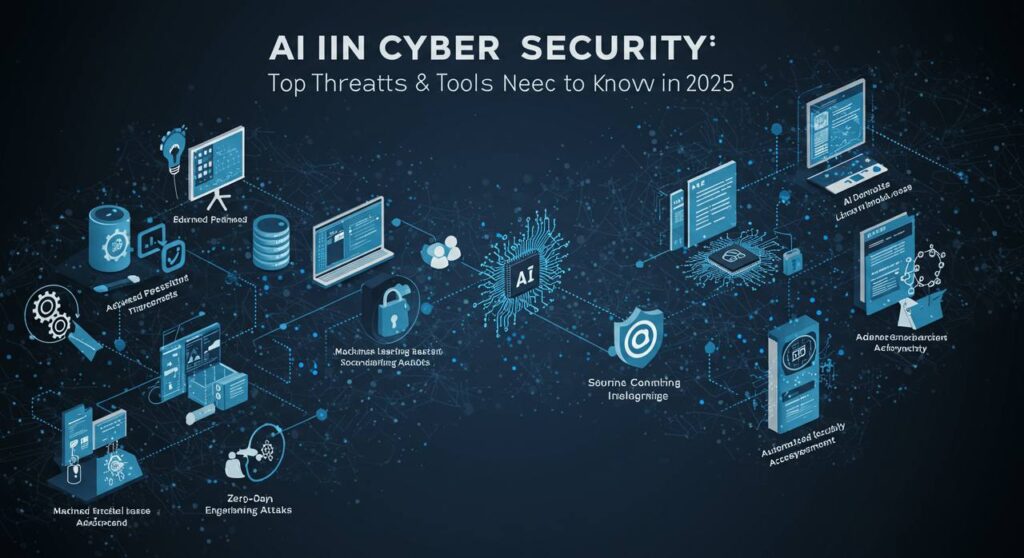
Top Tools Using AI in Cybersecurity (That You Should Know)
Let’s flip the script. The good news is, AI is also powering some of the smartest tools ever built to keep us safe. Here are the top tools dominating cybersecurity in 2025:
1. Darktrace
An industry leader, Darktrace uses unsupervised machine learning to detect subtle changes in network behavior. Its “Enterprise Immune System” mimics how our bodies detect viruses — identifying threats even without prior examples.
Best for: Real-time anomaly detection in large organizations.
2. CrowdStrike Falcon
CrowdStrike uses behavioral AI to monitor endpoints and detect malicious activity before it spreads. It doesn’t rely solely on signature databases — it learns as it observes.
Best for: Cloud-native endpoint protection at scale.
3. Google Chronicle
Backed by Google Cloud, Chronicle ingests years of security telemetry and runs AI-based threat analysis in seconds. It turns complex signals into actionable alerts.
Best for: Security teams dealing with massive data overload.
4. Microsoft Security Copilot
Built on OpenAI’s models, Security Copilot gives security professionals an AI assistant for threat hunting, incident response, and attack summarization. It’s like ChatGPT—but for defending your network.
Best for: Teams needing fast, AI-supported response workflows.
5. IBM Watson for Cybersecurity
Watson uses natural language processing to understand security reports and threat intelligence from around the world. It bridges human expertise with machine speed.
Best for: Enterprises that rely on vast, global threat intelligence.
What’s Next for AI in Cybersecurity?
Looking ahead, expect to see:
- AI-as-a-Service becoming more affordable and accessible—even for startups and small businesses.
- Zero-day threat prediction where AI spots new attack vectors before human researchers.
- AI + Quantum Encryption collaborations to counter ultra-fast hacking tools.
- And of course, the growing challenge of AI vs AI — defensive systems fighting off automated threats created by other AI systems.
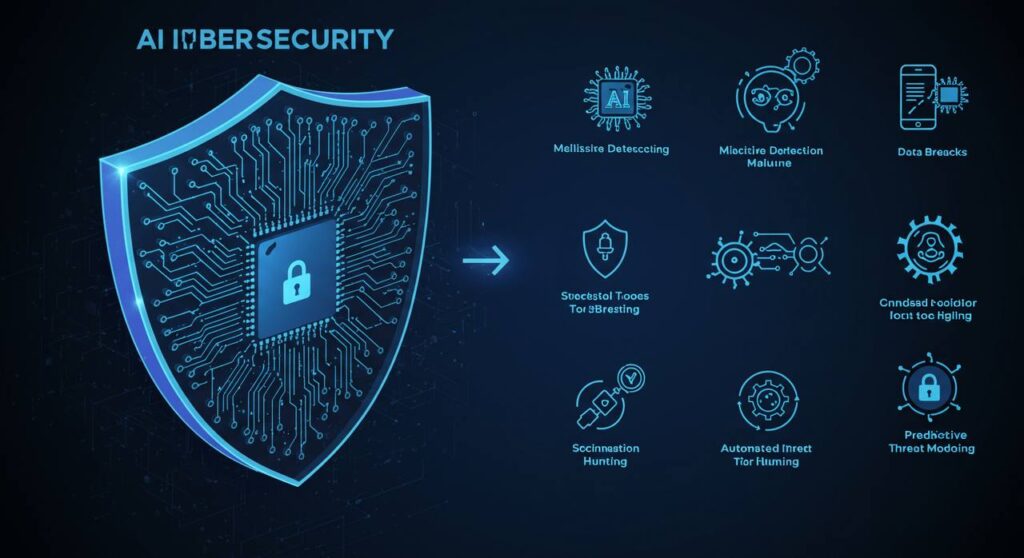
Final Thoughts: How to Stay Ready
AI in cybersecurity is no longer the future — it’s now. The threats are smarter, but so are the tools. To stay secure in 2025:
- Keep your systems and teams updated with the latest tools.
- Train staff to spot AI-enhanced phishing and deepfakes.
- Leverage AI in your own defense stack — don’t let attackers be the only ones with intelligent tools.
Because in this era, security isn’t just about firewalls—it’s about staying one step ahead of the machines.
Don’t wait for an AI-powered breach — upgrade your cybersecurity game now.
Want more timely tech insights like this?
Subscribe to get the latest trends, tools, and everything related to tech.
Related Posts
Cybersecurity in the Era of Remote Work: What Every Tech Professional Needs to Know


